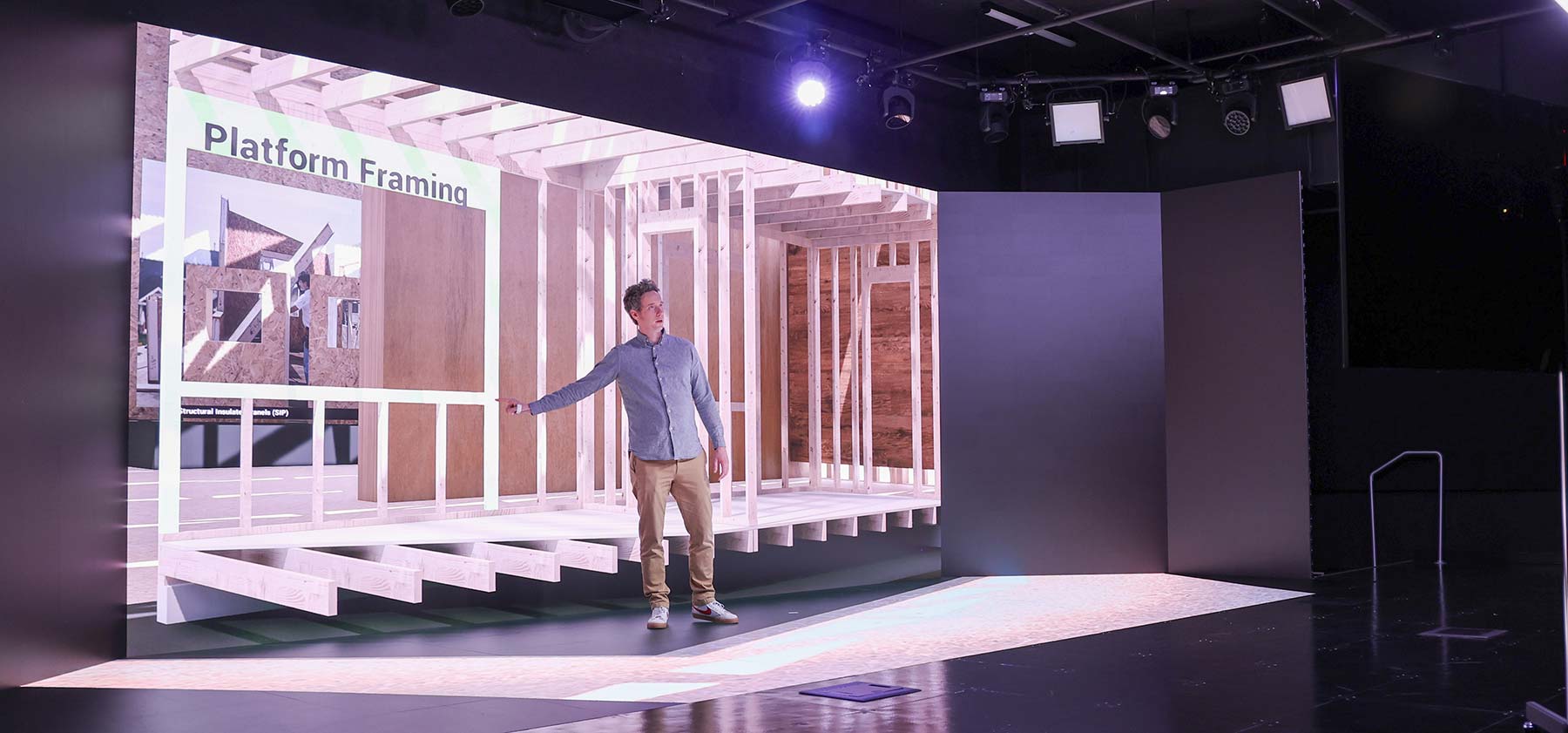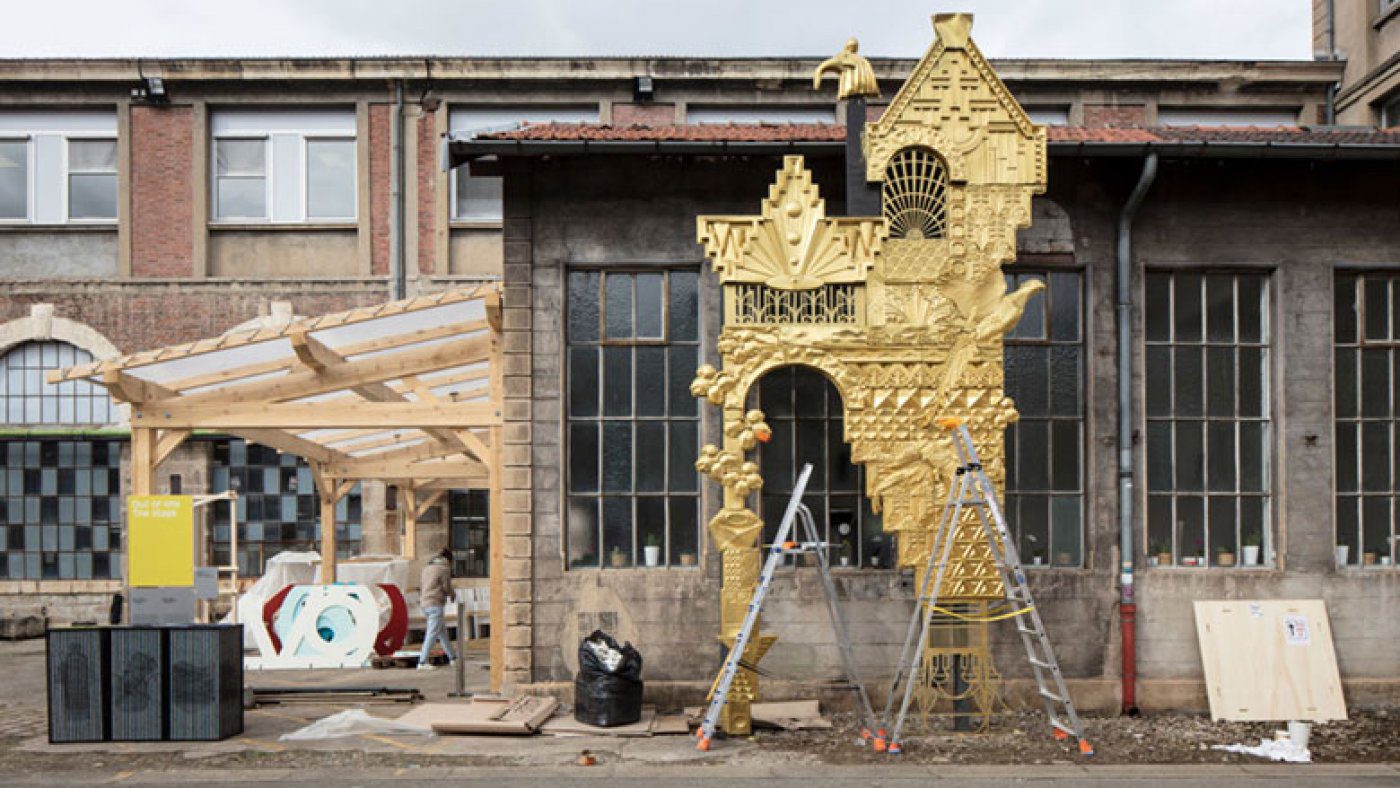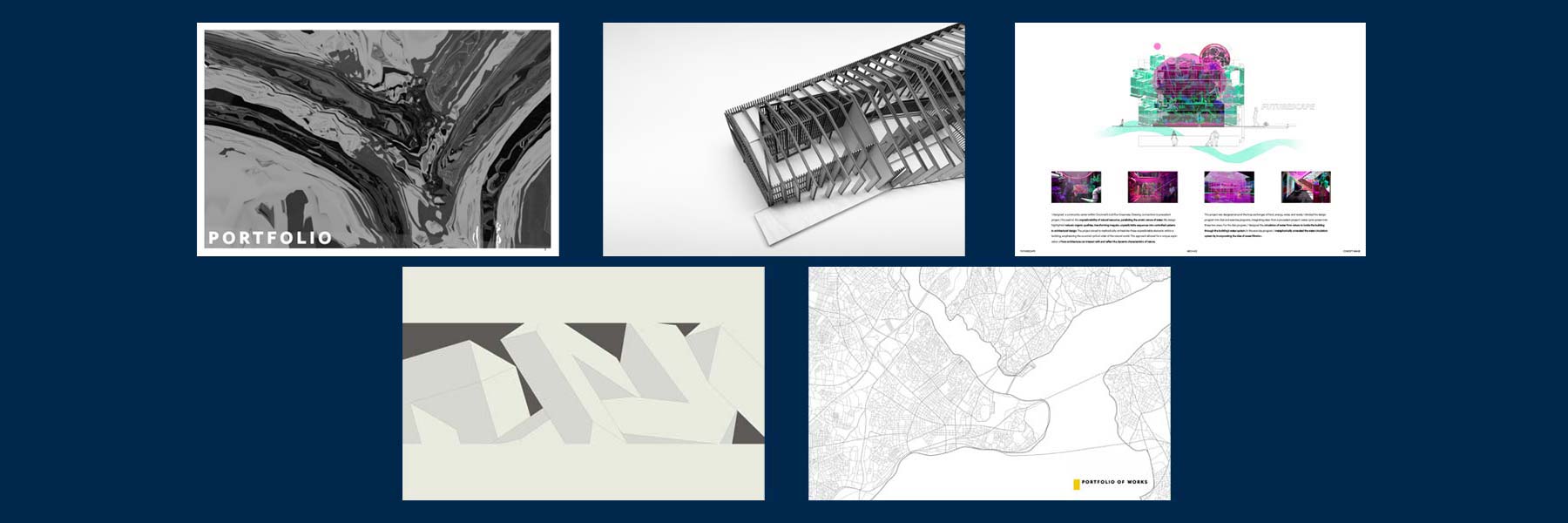
Jonathan Rule’s “Augmented Tectonics” project, which uses virtual realities to demystify construction concepts currently presented through abstract drawings and images, has become a showcase of the University of Michigan’s pioneering XR studio.
Rule, an assistant professor of practice with U-M’s Taubman College of Architecture and Urban Planning, piloted the 3D project several years ago as a teaching tool for his construction courses. He received funding for Augmented Tectonics as part of the first wave of projects for the U-M Center for Academic Innovation’s new Extended Reality (XR) Initiative.
Rule’s work is showcased in a new video featured on Michigan News, “Bridging academic worlds with virtual production: U-M’s XR stage expands global education.” Rule set foot on the 3D stage looking for a more engaging way to teach his classes in construction and design.
“My research has always been aligned toward studying things that would be beneficial for use in practice,” he said. “That might be how we use new technologies to shape teaching and practice. Then, once a student finishes school, they will be prepared to thrive in architecture.”
Rule is exploring XR to redefine the meaning of immersive and hands-on education for students and learners beyond campus.
“By creating an immersive environment, construction concepts become more tangible and supplement current learning methods through drawings and images,” he said. “Teaching on the XR stage, I can categorize, animate, and highlight things. I can pick up augmented reality objects and move them around. You can actually pick up the virtual elements as if they were physical.”
The XR studio can incorporate augmented, virtual, and mixed reality into virtual production and was built upon the technological milestones achieved by the Disney+ series The Mandalorian. Producers figured out how to use large LED screens and cameras to render 3D environments where the cast is immersed in real-time. The technology produces high-quality video content and doesn’t require much post-production work after filming.
The XR studio is one of six studios at the Center for Academic Innovation’s new facility in downtown Ann Arbor dedicated to developing accessible online learning experiences. The new studios could change how people teach and learn just as virtual production changed the film and TV industry.
“We have Hollywood here in Ann Arbor, and our faculty and student communities have access to this technology,” said Jeremy Nelson, senior director of XR, media design and production at the center. “This technology will shape the future and is a step forward in making education accessible to everybody.”
Image credit: Jeremy Marble, Michigan News







